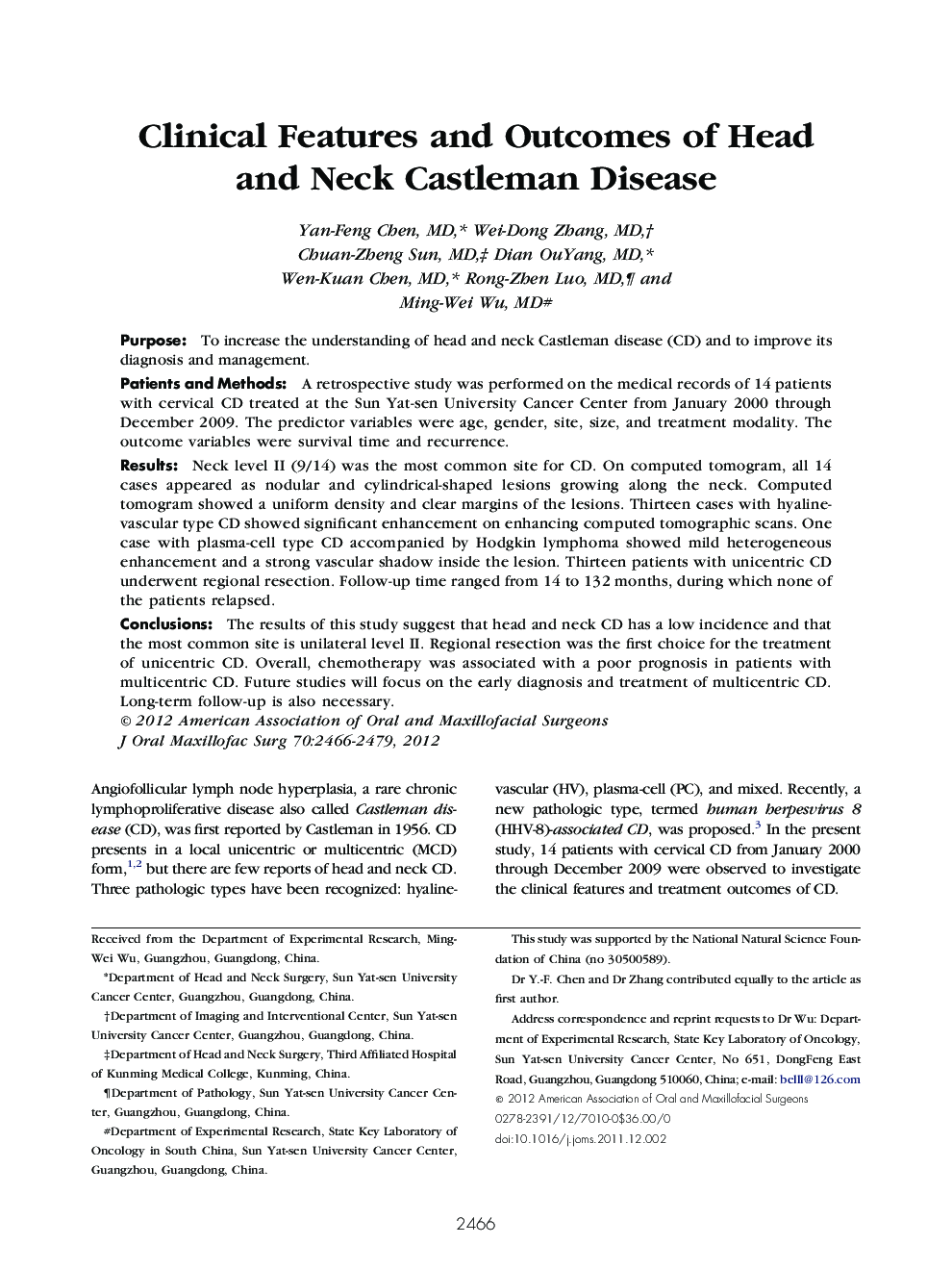| Article ID | Journal | Published Year | Pages | File Type |
|---|---|---|---|---|
| 3156665 | Journal of Oral and Maxillofacial Surgery | 2012 | 14 Pages |
PurposeTo increase the understanding of head and neck Castleman disease (CD) and to improve its diagnosis and management.Patients and MethodsA retrospective study was performed on the medical records of 14 patients with cervical CD treated at the Sun Yat-sen University Cancer Center from January 2000 through December 2009. The predictor variables were age, gender, site, size, and treatment modality. The outcome variables were survival time and recurrence.ResultsNeck level II (9/14) was the most common site for CD. On computed tomogram, all 14 cases appeared as nodular and cylindrical-shaped lesions growing along the neck. Computed tomogram showed a uniform density and clear margins of the lesions. Thirteen cases with hyaline-vascular type CD showed significant enhancement on enhancing computed tomographic scans. One case with plasma-cell type CD accompanied by Hodgkin lymphoma showed mild heterogeneous enhancement and a strong vascular shadow inside the lesion. Thirteen patients with unicentric CD underwent regional resection. Follow-up time ranged from 14 to 132 months, during which none of the patients relapsed.ConclusionsThe results of this study suggest that head and neck CD has a low incidence and that the most common site is unilateral level II. Regional resection was the first choice for the treatment of unicentric CD. Overall, chemotherapy was associated with a poor prognosis in patients with multicentric CD. Future studies will focus on the early diagnosis and treatment of multicentric CD. Long-term follow-up is also necessary.
